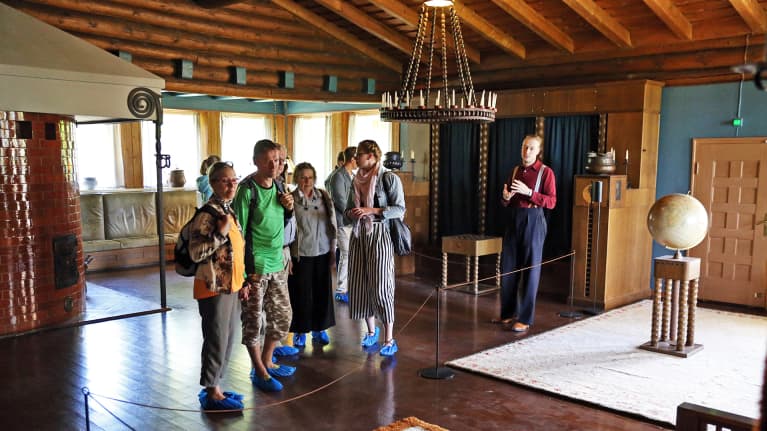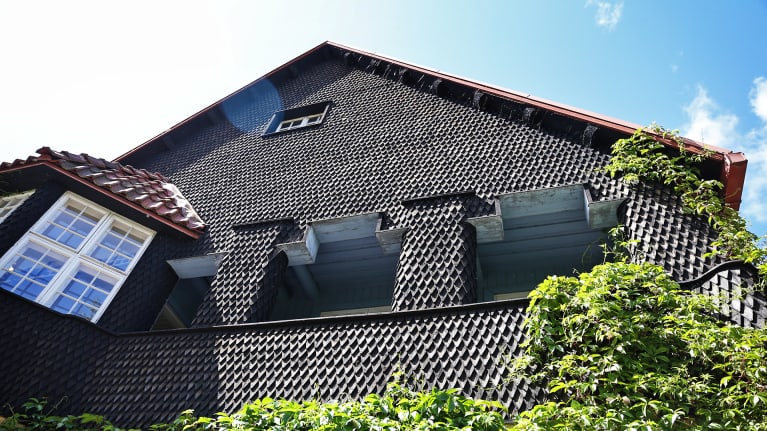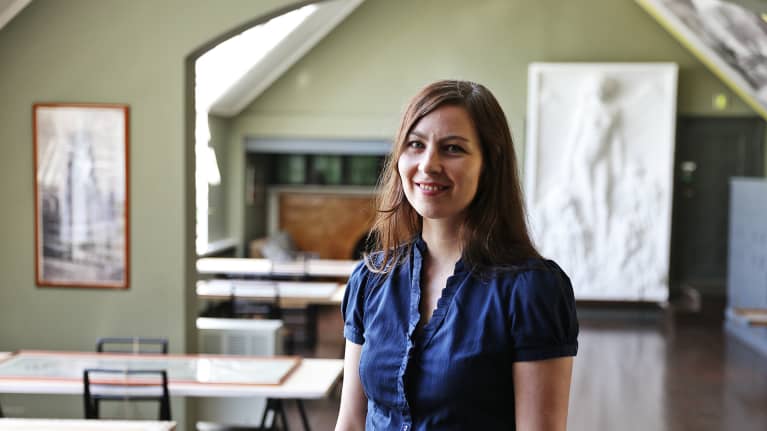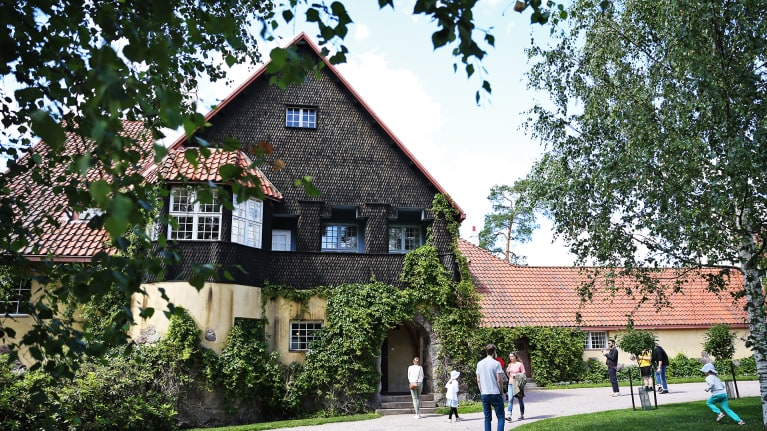Flocks of tourists roam the gardens around the Hvitträsk mansion, just 30 kilometres west of Helsinki. They're cruise ship passengers, mostly American, who have opted for a day trip to Kirkkonummi during their brief stop-over in Finland.

Indeed, for many the site brings together Finnish design, history and nature in one package. The forested lakeside estate also offers dining, hiking and swimming possibilities, making it a popular destination for locals and tourists alike.
The sprawling 1902 complex, built in the National Romantic style, is a landmark of Finnish architecture. It was designed in the early twentieth century as the studio and home of three then up-and-coming architects, Herman Gesellius, Armas Lindgren and Eliel Saarinen. They often hosted close friends such as composer Jean Sibelius, artist Akseli Gallen-Kallela and author Maxim Gorky. The house opened as a museum in 1971.
Year-round place of pilgrimage
Saarinen, the best-known of the three, lived there for the longest period with his family.
His son, Eero Saarinen, was born at Hvitträsk and went on to become a leading architect in the United States, creating iconic structures such as the St Louis Gateway Arch and the TWA Terminal at New York's John F Kennedy Airport.
Consequently, Hvitträsk is of interest to American architects such as Mark Robin, who visited recently.
"I wanted to make a pilgrimage here," he told Yle. Robin compares the site to designs by US architect Frank Lloyd Wright and Scotland's Charles Rennie Mackintosh.

"These architects did work that was similar to that of the Hvitträsk people, complete works of art that included buildings as well as furniture and interior design materials," Robin says.
As such, Hvitträsk has been a year-round place of pilgrimage for architects and architecture students for decades. That is now changing, though, due to budget cuts at the National Board of Antiquities, which administers it.
As a result, the museum is now only open five days a week and only during the summer.
"Dismay, queries and feedback"
"This has aroused dismay, and there have been queries and feedback about it. In the past, people came from all around the world to visit throughout the year," says Suvi Nuotio, a guide at the museum. "Summer is not the typical time for architecture students to visit."

The decline in Hvitträsk's fortunes dates back to significant cuts to the Board of Antiquities ' budget. Hvitträsk's only full-time staff position was eliminated, as the museum is now run by a single guide, who is on a half-time contract.
This sends an odd message as Finland strives to attract visitors tourists during its centennial year of independence.
Holistic work of art
The Hvitträsk architects, along with Gallen-Kallela, designed the Finnish Pavilion for the 1900 Paris World's Fair, which is credited with putting the Russian-ruled Grand Duchy of Finland on the world map, 17 years before independence.
Before immigrating to the US in 1923, Eliel Saarinen went to create many other Finnish landmarks such as the Helsinki Railway Station and the National Museum.
Finnish architect Heikki Aronpää, another recent visitor, describes Hvitträsk as one of the key sites of Finnish architecture. He particularly admires the handicraft that went into the rustic-style building.

"Everything was done by hand, from the shaping of the fireplaces to the tilework. Hvitträsk is a holistic work of art," Aronpää says.
He is disturbed by the museum's limited opening hours.
"As a result, many will not be able to experience this amazing chapter of Finnish architecture," says Aronpää.

Two years ago, the Board also aroused controversy with heavy logging of old trees close to the house – though the architects had specifically planned the house to fit in with the surrounding forest.
Last year Hvitträsk attracted about 20,000 visitors. Half of them were from abroad, primarily from the US, Britain and Russia.
